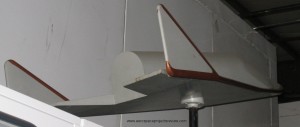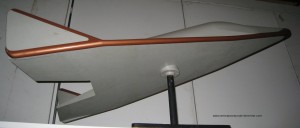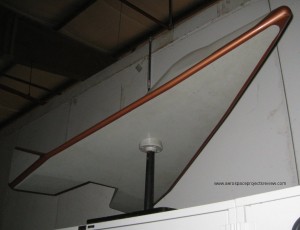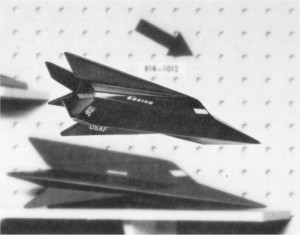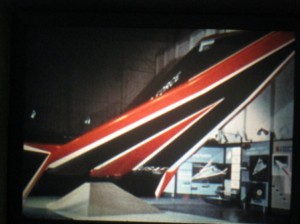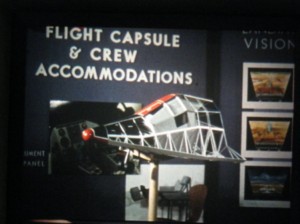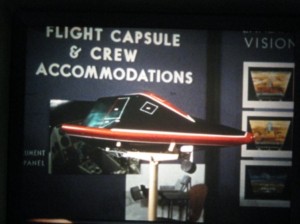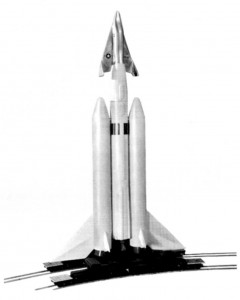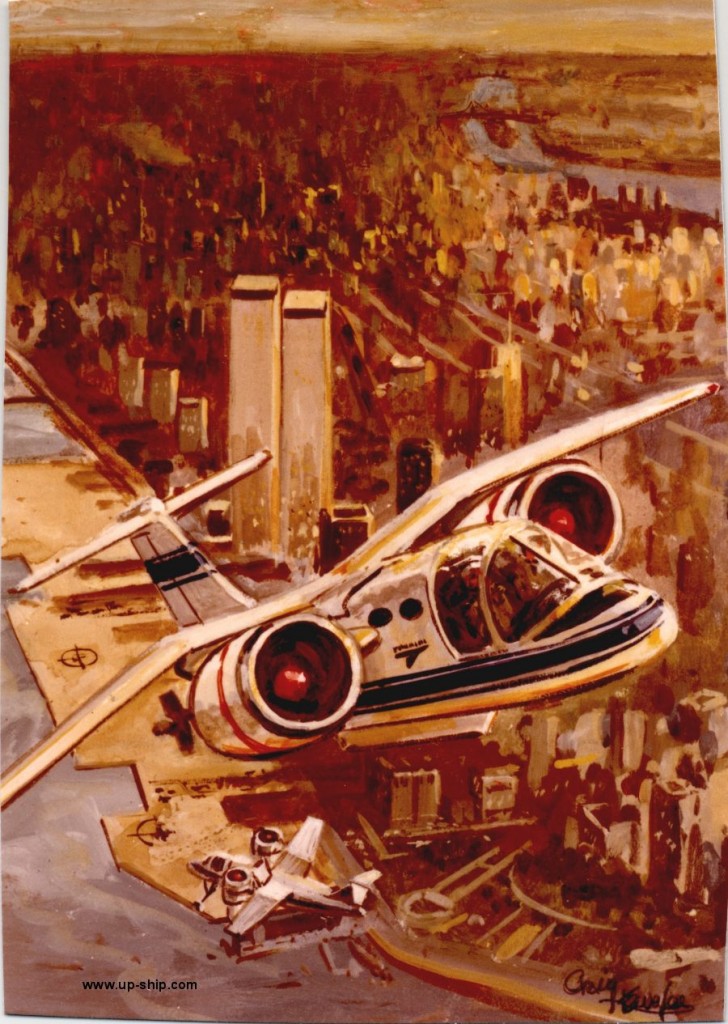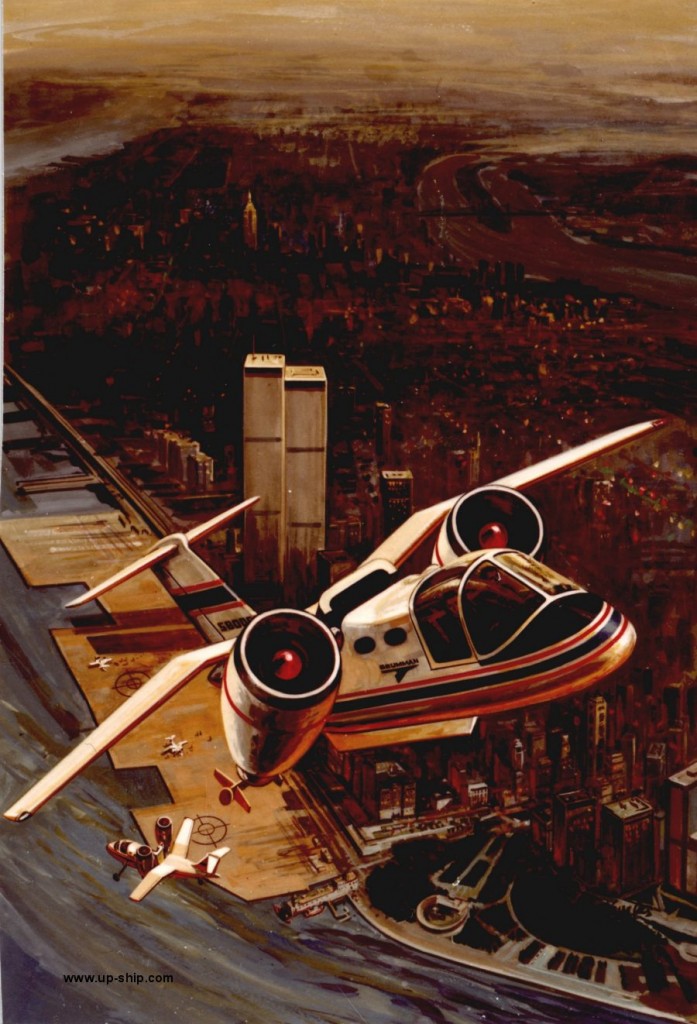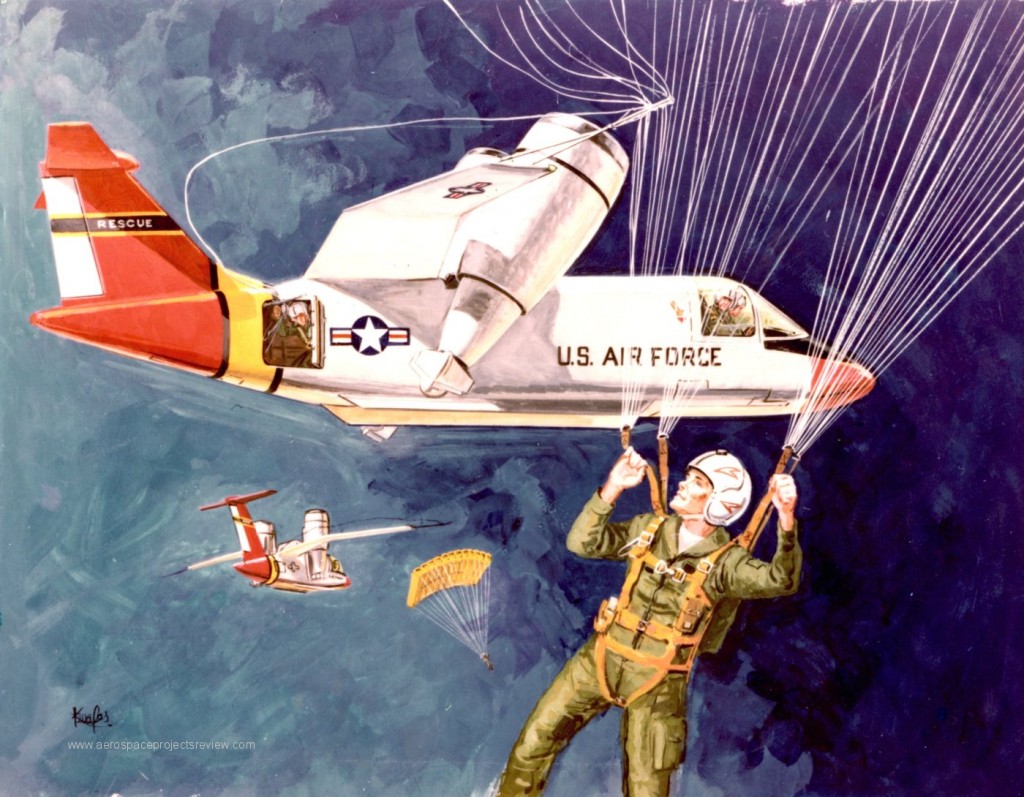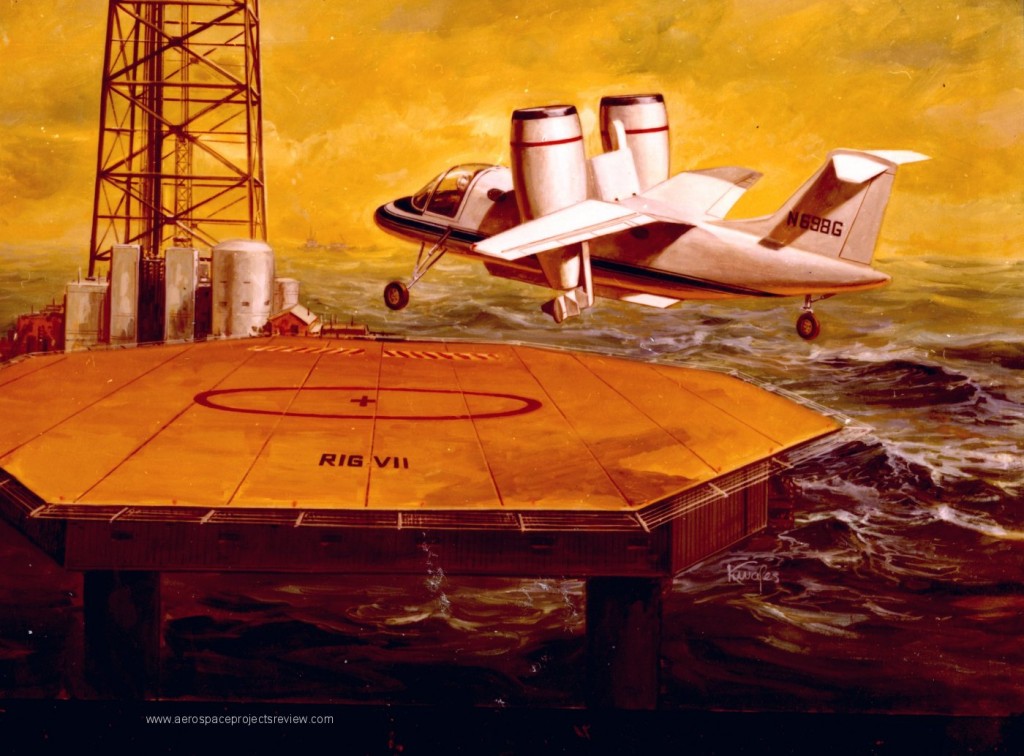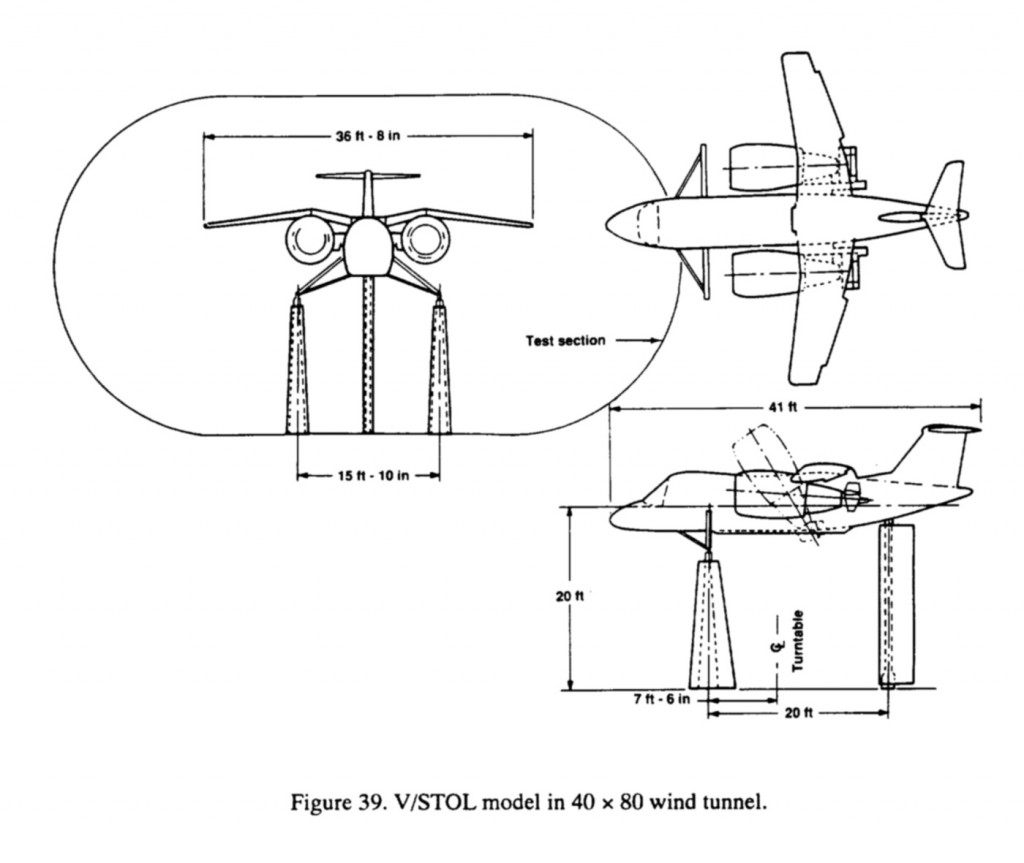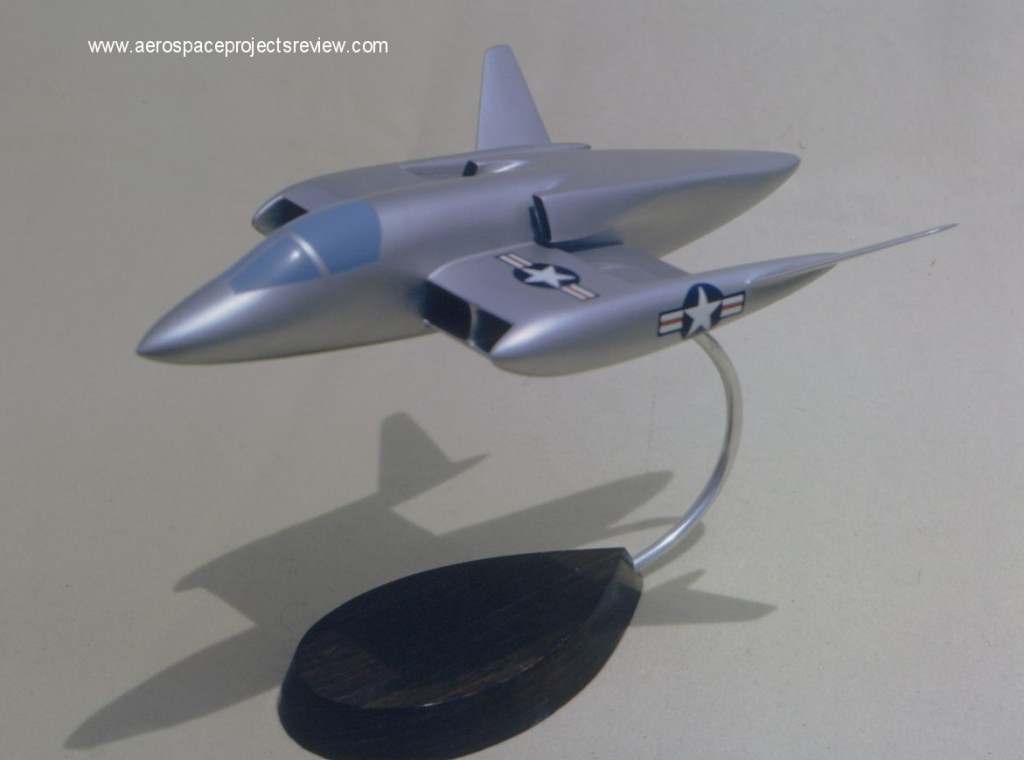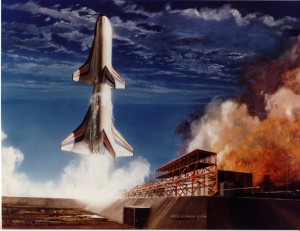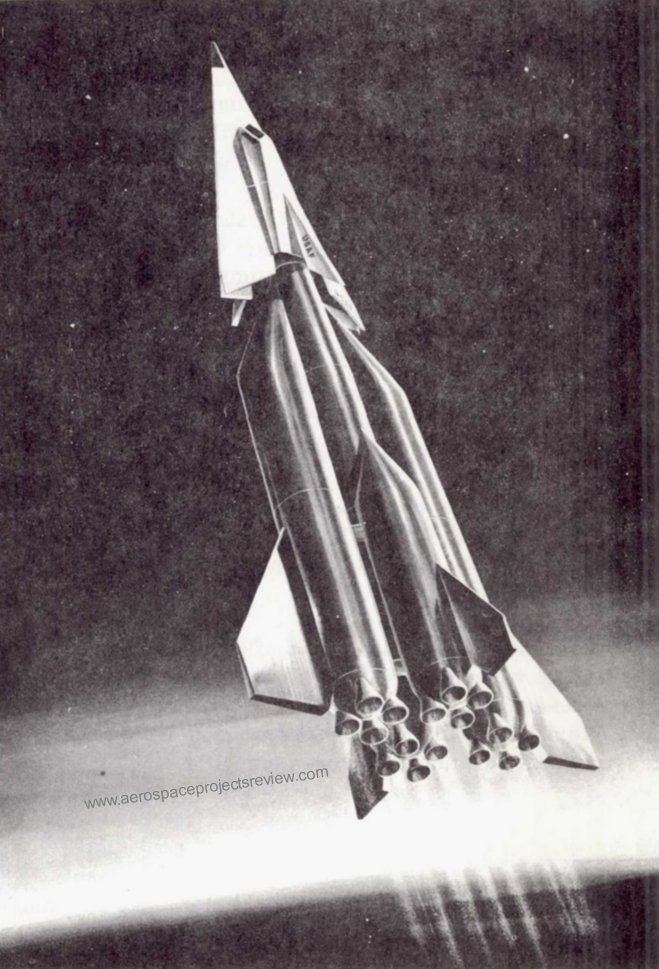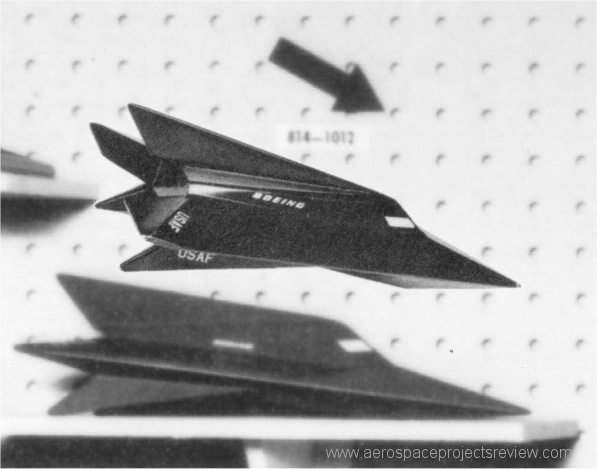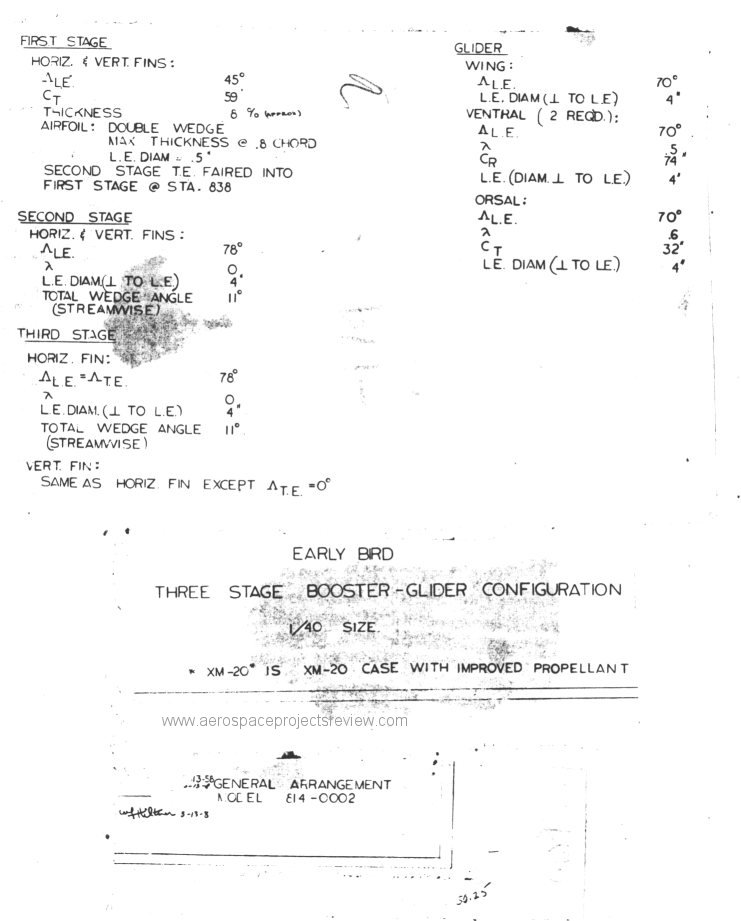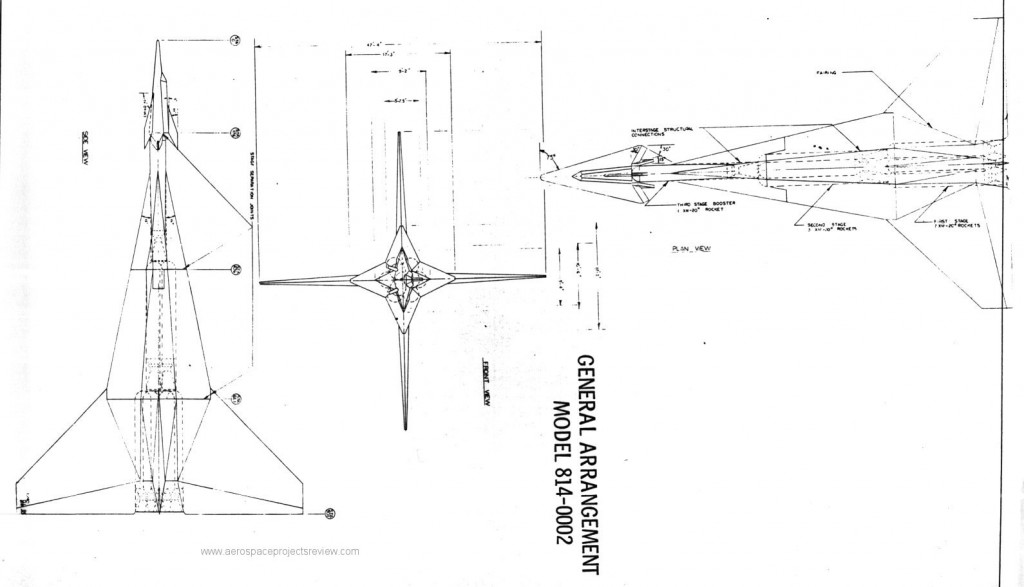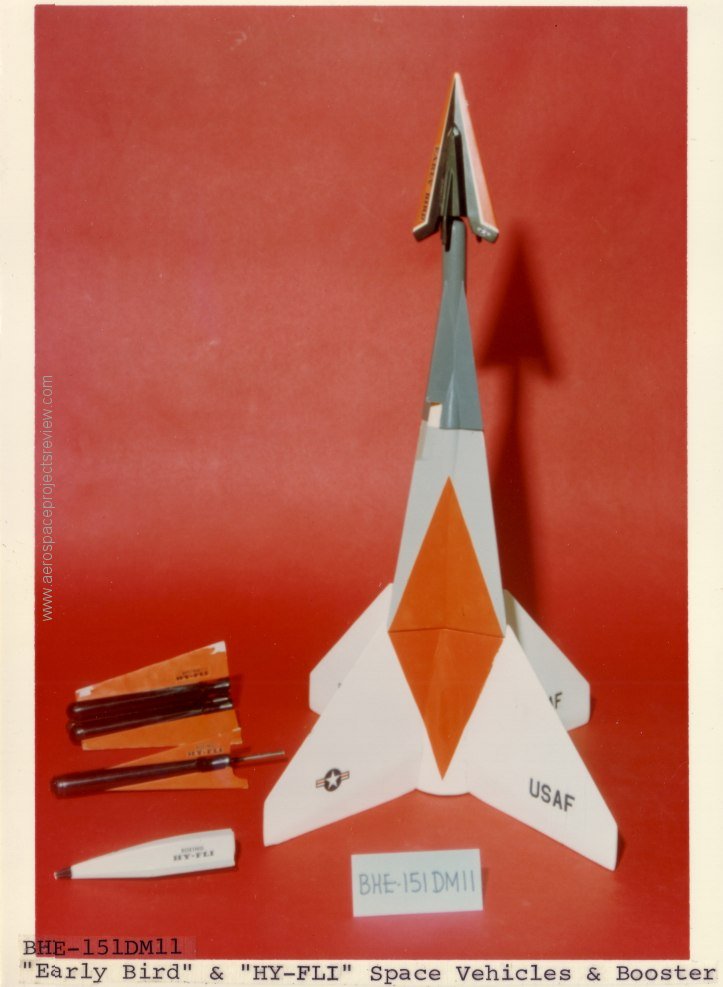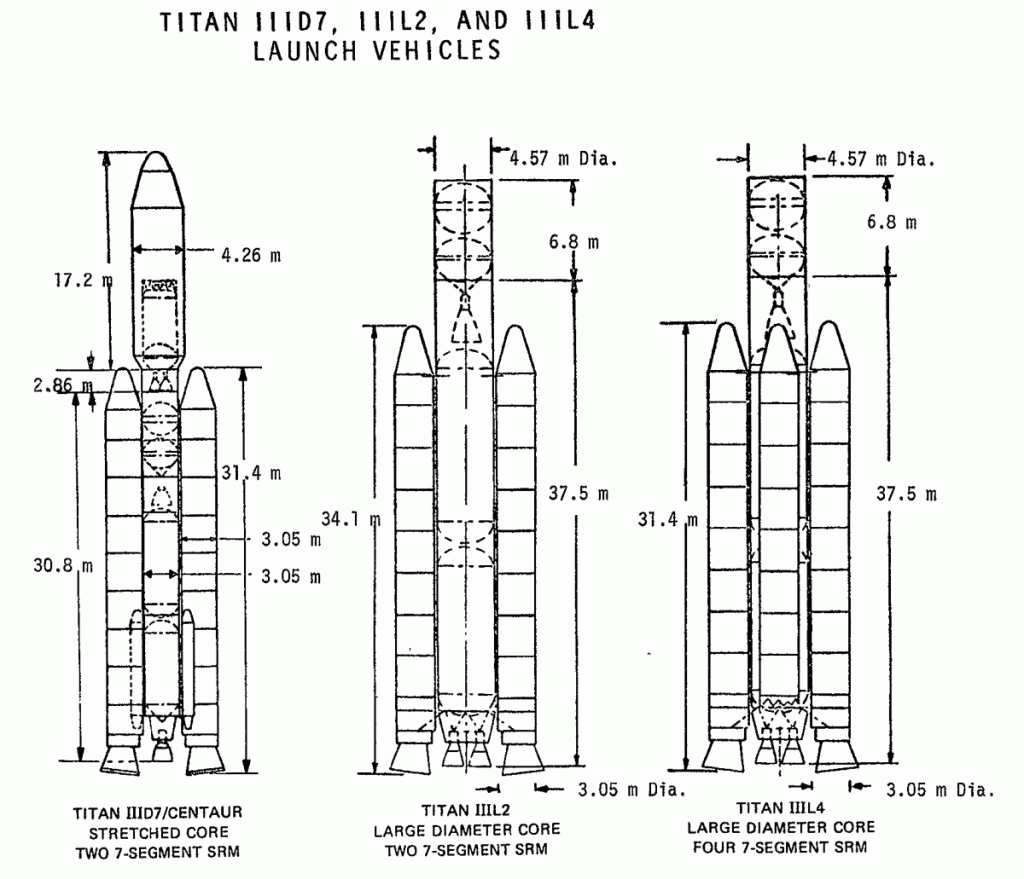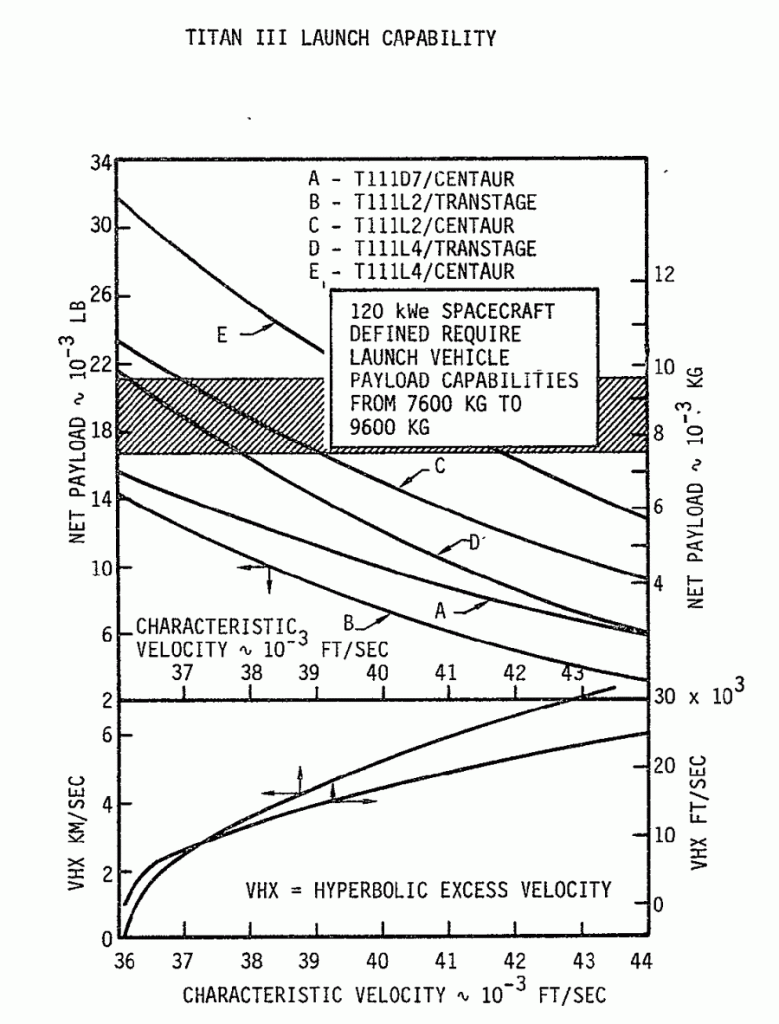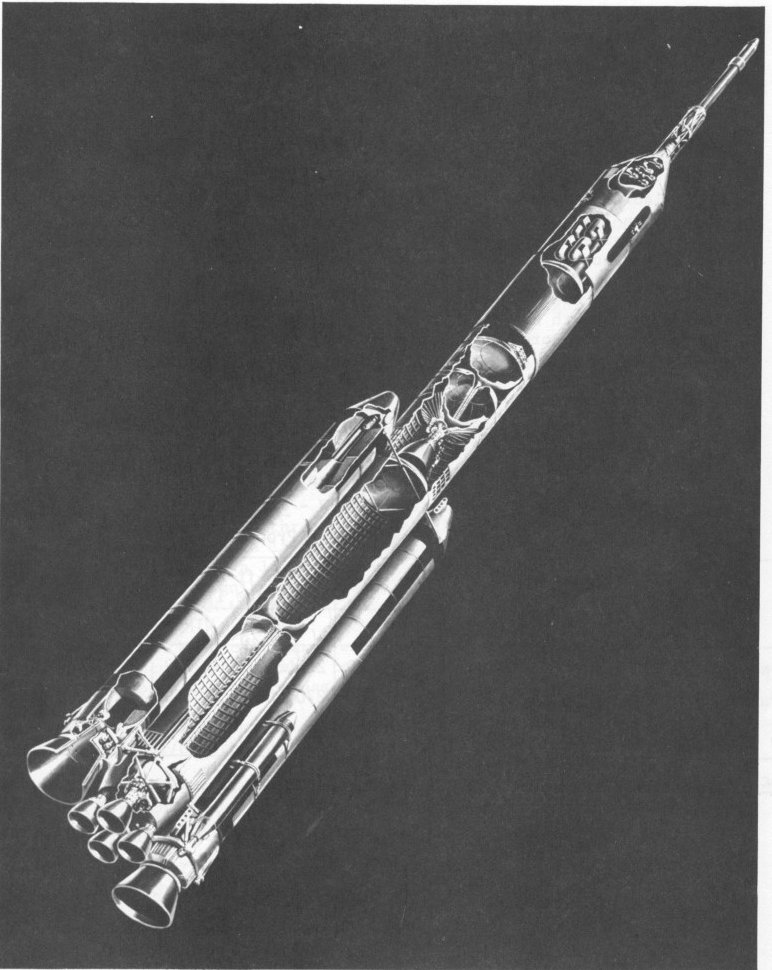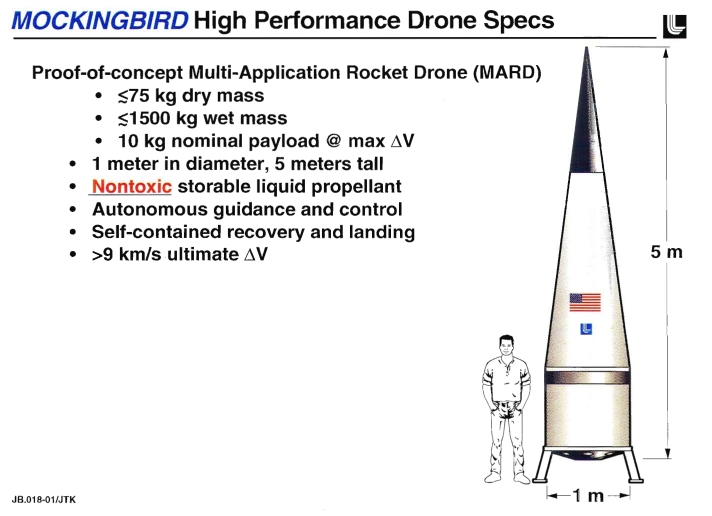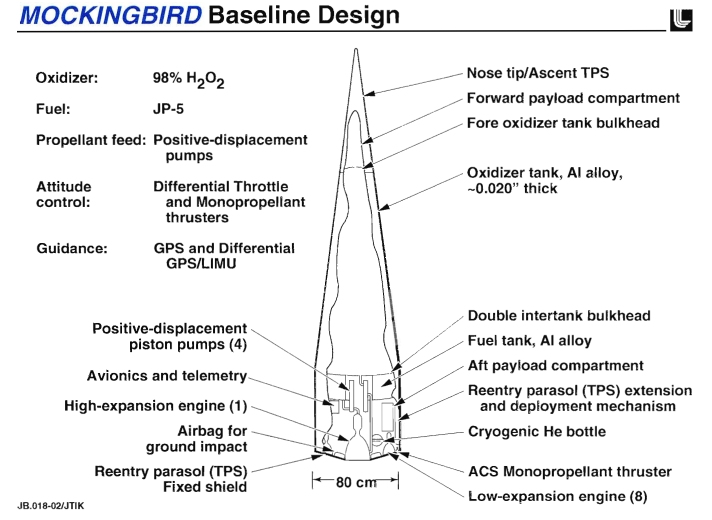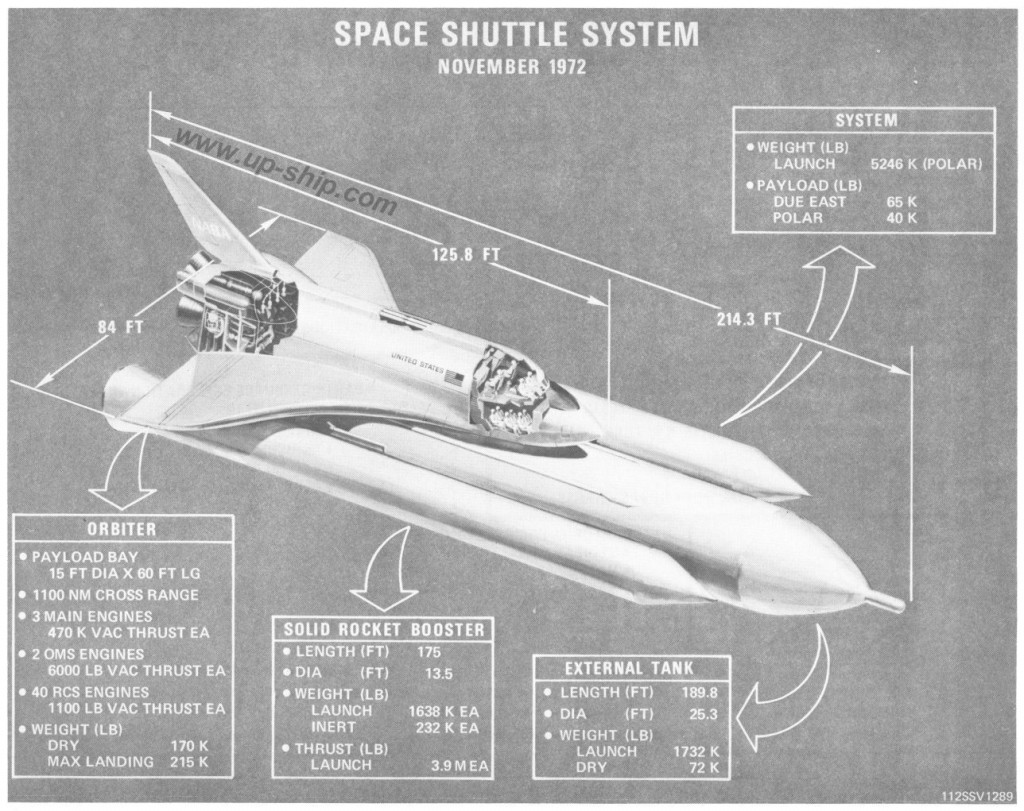A few examples of models and mockups of different versions of the Dyna Soar:
A few years back I got to poke around a little bit in the NASM Garber facility. Lighting was not the best and some areas were photography-discouraged, but there were a few things that I got some photos of. One was a large model of an early Boeing Dyna Soar configuration. It may have originally been a wind tunnel model that was repurposed into a display model, or it may have been a display model from the get-go (kinda big, though).
————–
One of Boeings earliest Dyna Soar designs, the Model 814-1012, dating from about March, 1958. Terribly ’50′s in design, looks like a hood ornament. All angles and fins, including two ventral fins which would have had a hell of a time surviving re-entry. This image is made from two separate kinda blurry photos of presumably the same display model.
———
Mockup and display model photos, circa 1960. Taken from a mockup review film.
———
A photo of a Martin corp. display model showing an early Dyna Soar/Titan III configuration. The Titan III would lose the fins after testing showed that the thrust vectoring capability of the Titan III’s UA-1205 booster rockets was up to the task of countering pitch moments produced by the Dyna Soar.
Parts of this were originally posted HERE, HERE, HERE and HERE.
